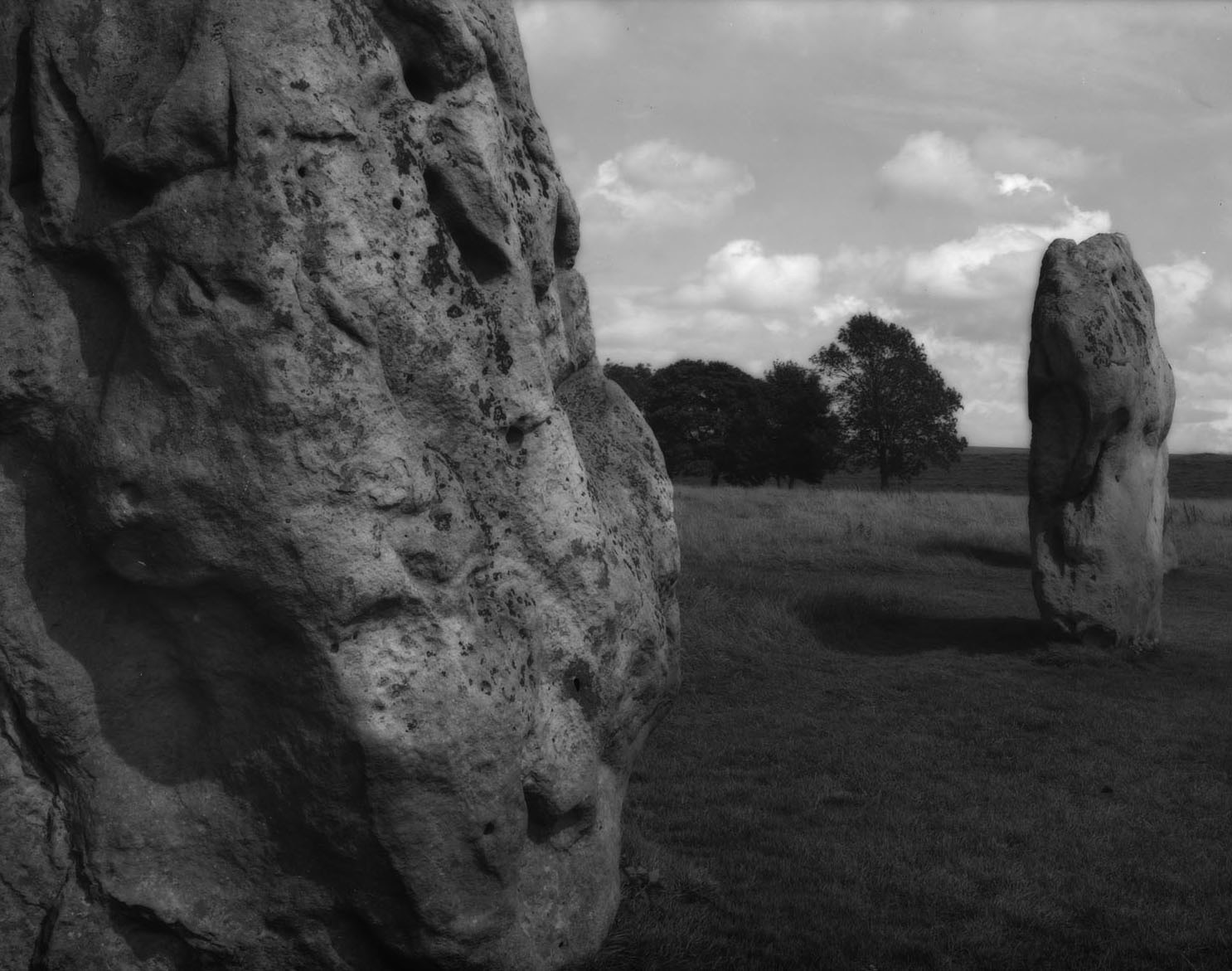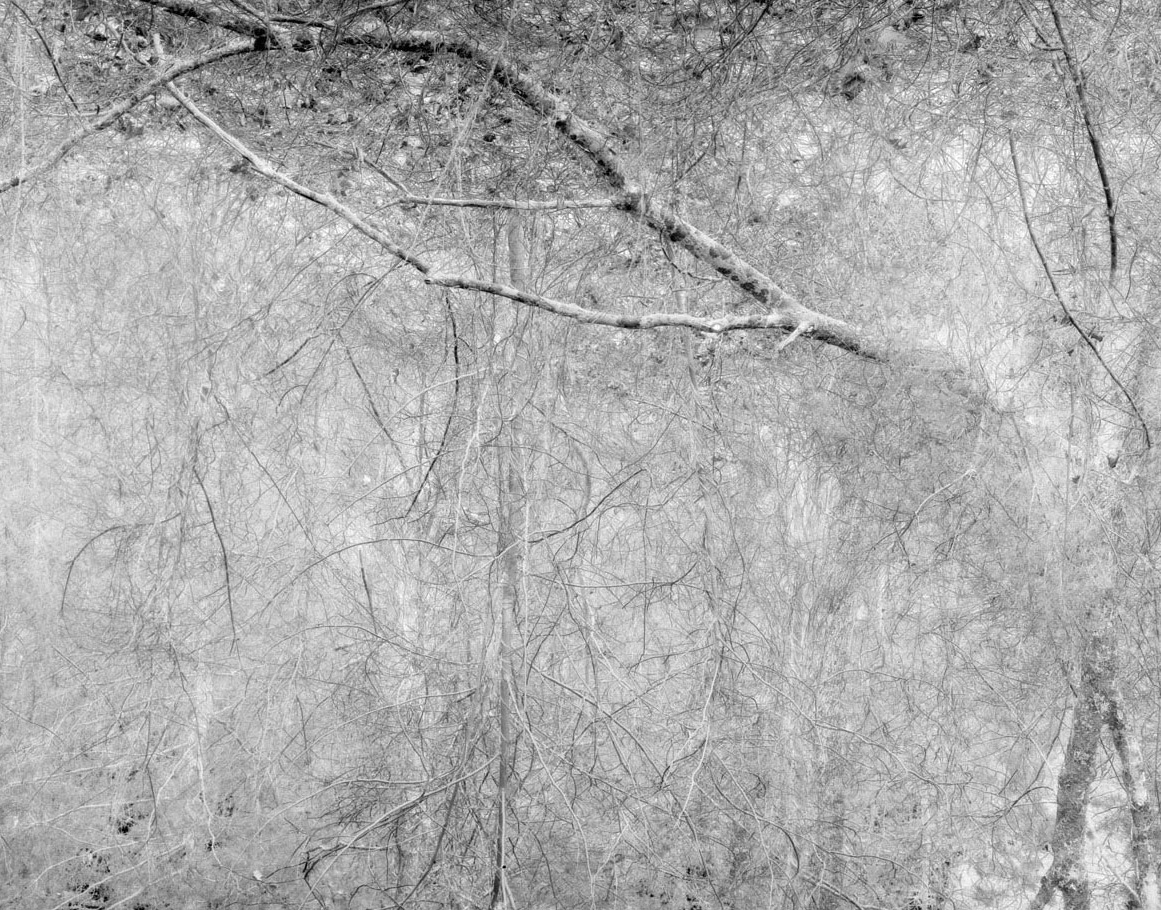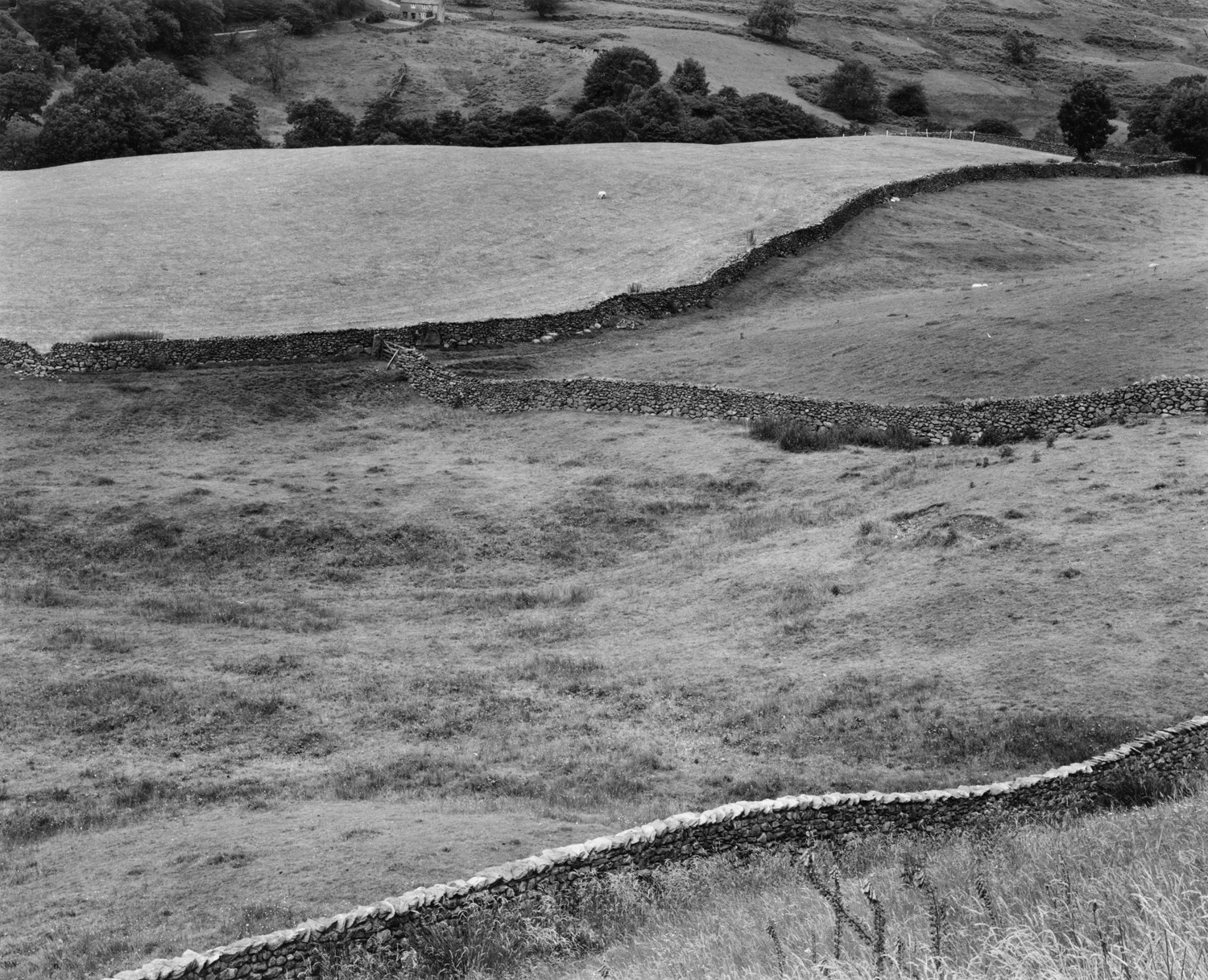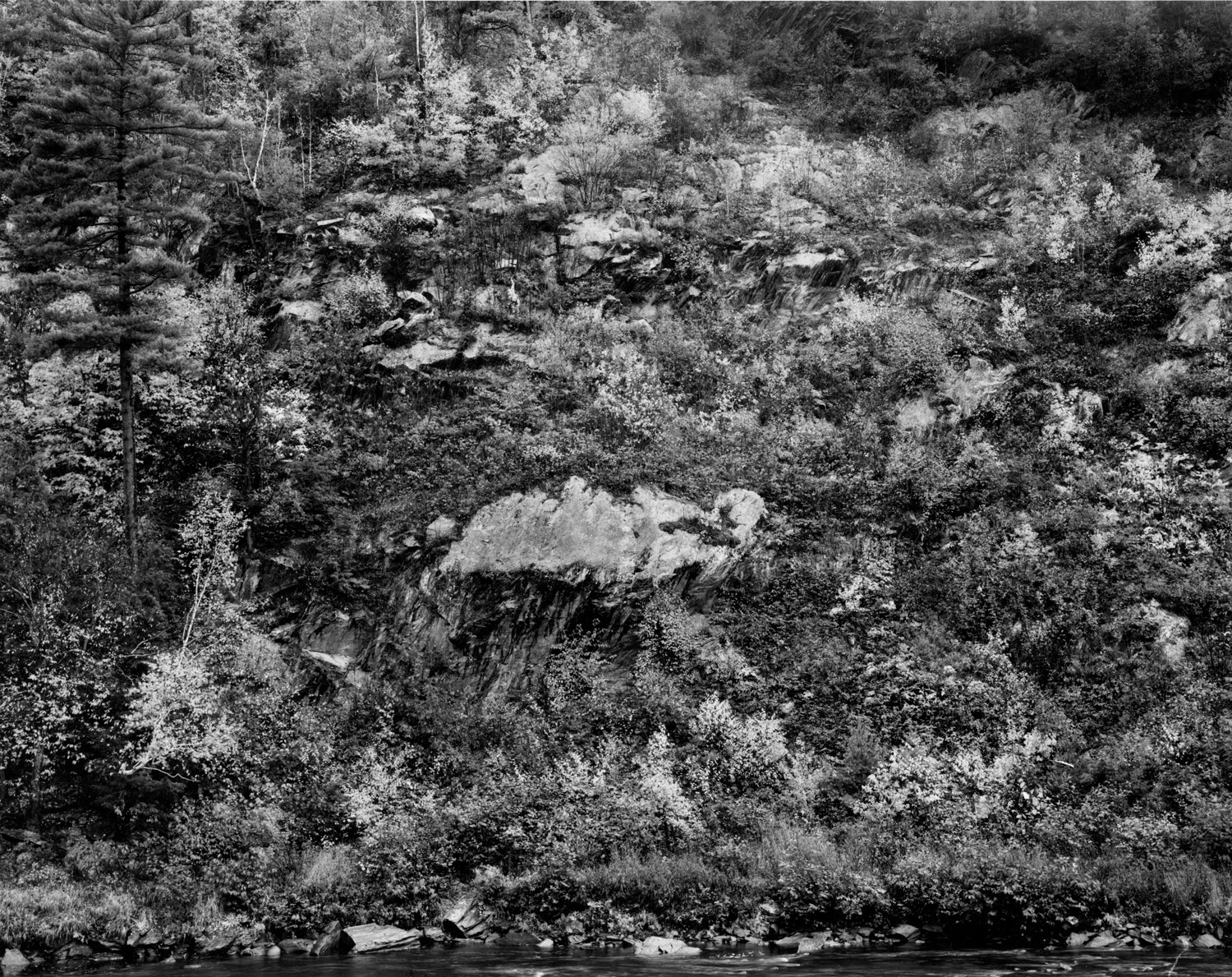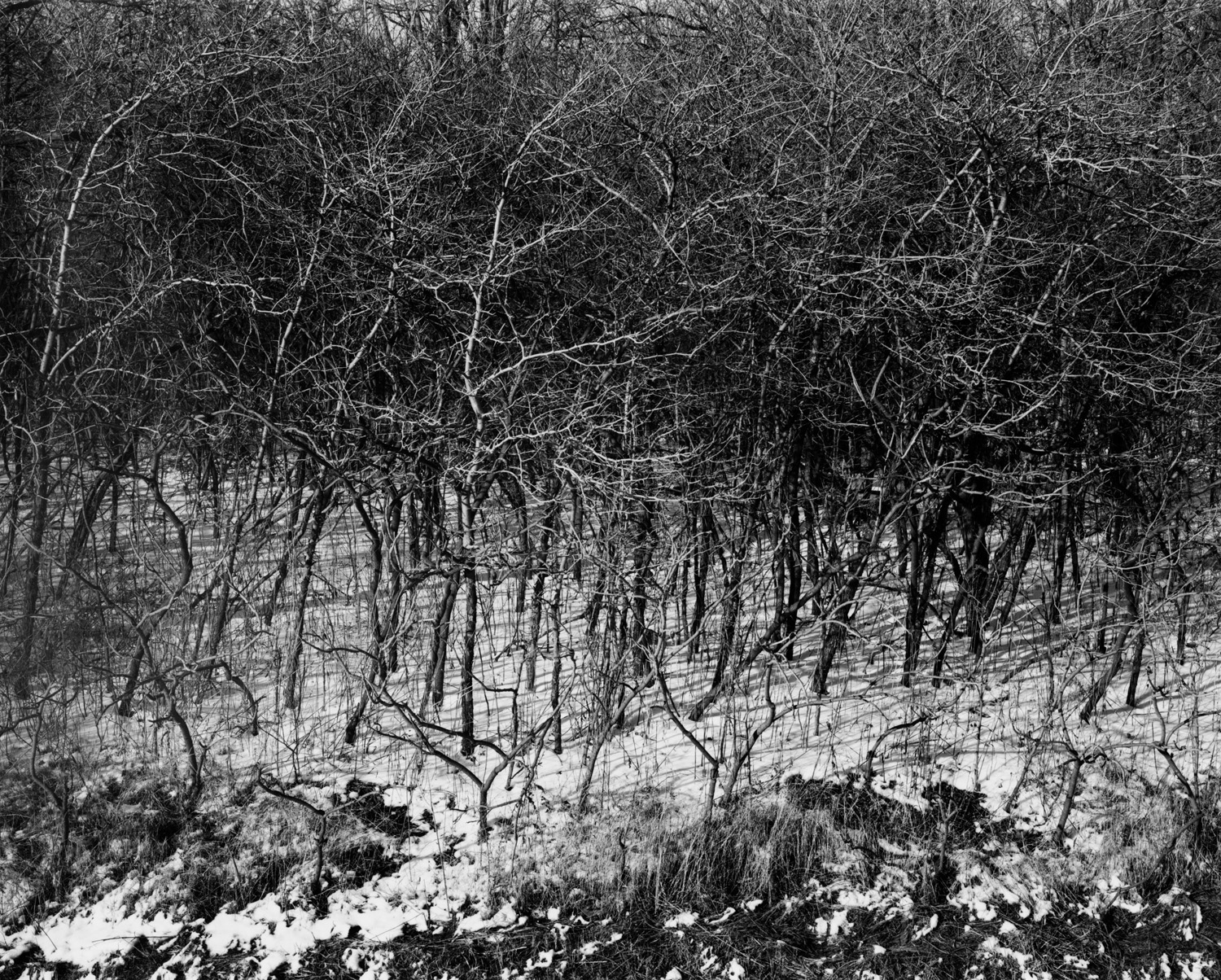These images are from Traub’s landscape oeuvre Edge to Edge, made between 1970 and 1973. The two parts body of work, consisting both positive and negative images, were inspired by the photographer’s interest in Asian art, specifically the Floating Landscape. The horizon is erased, scale is diminished, and everything wafts in a two dimensional photographic space that draws no attention to a single object. There’s no Punctum, but sticks and stones become radiate in an undefined plane In filling the frame from edge to edge with the surface of nature, Traub has produced a group of images which transcend traditional western views of reality.
“For those familiar with the resonant music of the shakuhachi, an ancient Japanese reed flute, the photographs of Charles Traub will be familiar aesthetic ground. The meditative, chromatic tones produced by this most simple of musical instruments moves the spirit of both performer and audience in a deep and singular manner. The sounds produced range from soft, warm, full tones to brilliant, penetrating highlights. The poetic and descriptive titles of compositions for the shakuhachi generally refer to landscape or nature (i.e. “Three Valleys”), yet the music is more devoted to the sounds themselves than to actual metaphor. The aesthetic analogy between Traub's photographs in this portfolio and the music of the shakuhachi is so complete that to describe the music is to describe his photographs...His photographs do not describe the landscape as a means of philosophical metaphor; rather each image is about its own complex structure of tone, dimension, scale, and variety of forms—to hear is to see.”
Edge to Edge, 1983
“For those familiar with the resonant music of the shakuhachi, an ancient Japanese reed flute, the photographs of Charles Traub will be familiar aesthetic ground. The meditative, chromatic tones produced by this most simple of musical instruments moves the spirit of both performer and audience in a deep and singular manner. The sounds produced range from soft, warm, full tones to brilliant, penetrating highlights. The poetic and descriptive titles of compositions for the shakuhachi generally refer to landscape or nature (i.e. “Three Valleys”), yet the music is more devoted to the sounds themselves than to actual metaphor. The aesthetic analogy between Traub's photographs in this portfolio and the music of the shakuhachi is so complete that to describe the music is to describe his photographs...His photographs do not describe the landscape as a means of philosophical metaphor; rather each image is about its own complex structure of tone, dimension, scale, and variety of forms—to hear is to see.”
Edge to Edge, 1983
POSITIVE LANDSCAPE
NEGATIVE LANDSCAPE
